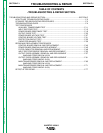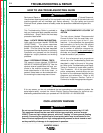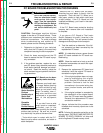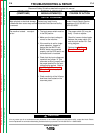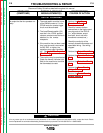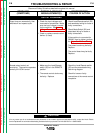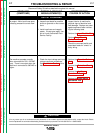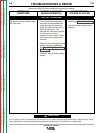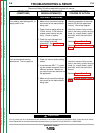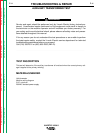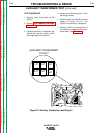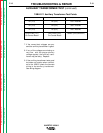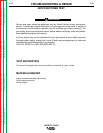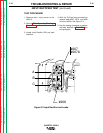
F-9
TROUBLESHOOTING & REPAIR
F-9
INVERTEC V250-S
Observe all Safety Guidelines detailed throughout this manual
If for any reason you do not understand the test procedures or are unable to perform the tests/repairs safely, contact the Lincoln Electric
Service Department for technical troubleshooting assistance before you proceed. Call 216-383-2531 or 1-800-833-9353.
CAUTION
WELDING PROBLEMS
PROBLEMS
(SYMPTOMS)
POSSIBLE AREAS OF
MISADJUSTMENT(S)
RECOMMENDED
COURSE OF ACTION
Poor welding, weld settings drift, or
output power is low.
Poor stick electrode welding
performance. The arc pops out.
1. Make sure the machine settings
are correct for the weld process
being used.
2. Check machine performance on
LOCAL control. If OK then the
remote control device may be
faulty. Check or replace.
3. Check the input voltages and
input voltage reconnect
procedures. See
Installation
Section
of this manual.
1. Check for loose or faulty welding
cables.
2. Is the electrode DRY? Try weld-
ing with another electrode from a
different container. Make sure
you have the correct electrode for
the application.
3. Make sure the machine settings
are correct for the weld process
being used.
1. Check the operation of the mode
switch (S2) and the associated
circuitry. See wiring diagram.
2. Check for loose or faulty connec-
tions in the heavy current carrying
leads (i,e,. output diodes, output
terminals, shunt and main trans-
former.)
3. Perform
Output Diode Test
.
4. Perform
Control Board Voltage
Test
.
1. Check for loose or faulty connec-
tions in the heavy current carrying
leads (i,e,. output diodes, output
terminals, shunt and main trans-
former.)
2. Perform
Output Diode Test
.
3. Perform
Control Board Voltage
Test
.
Return to Section TOC Return to Section TOC Return to Section TOC Return to Section TOC
Return to Master TOC Return to Master TOC Return to Master TOC Return to Master TOC



